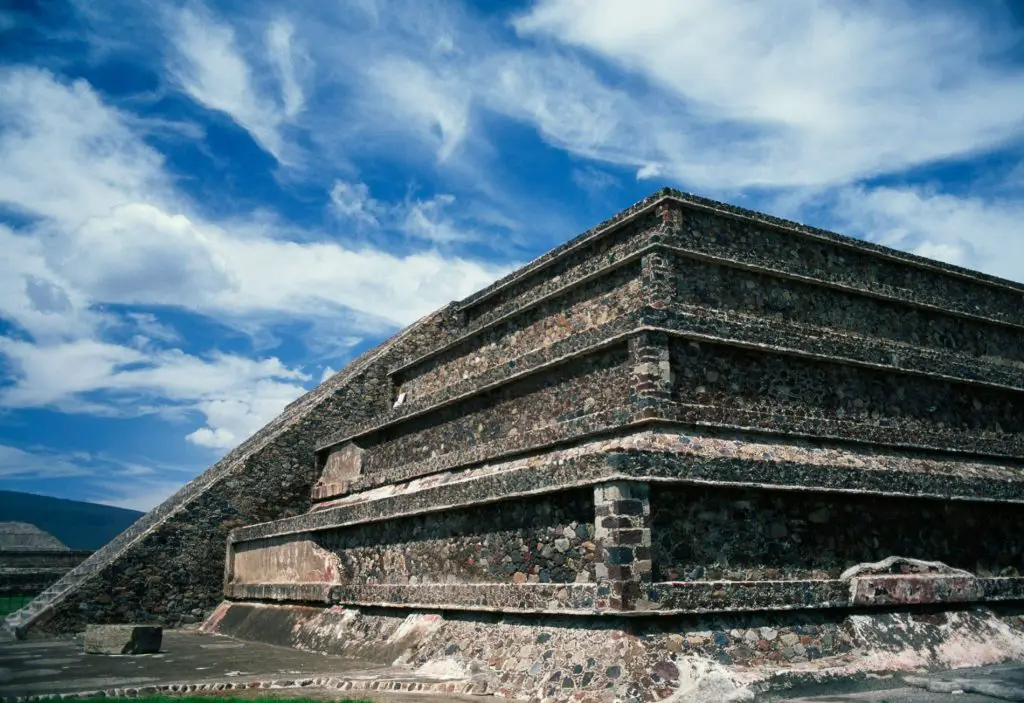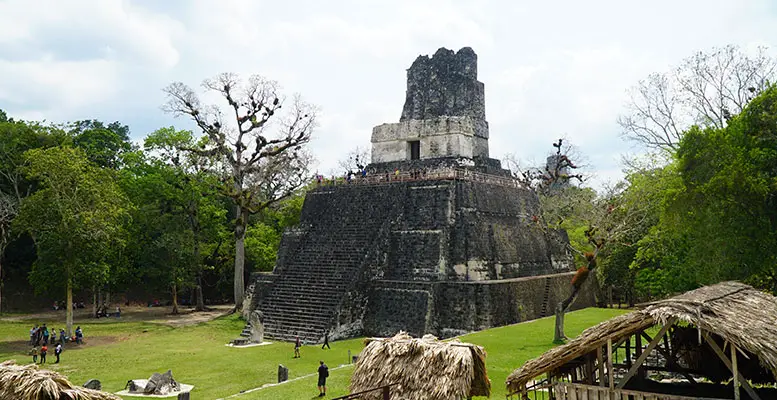At first glance, and according to the maps used by archaeologists, it appeared to be just another hill in the rolling landscape of Tikal, the ancient Maya city-state in northern Guatemala. However, when researchers closely examined an aerial image captured with LiDAR (Light Detection And Ranging), a laser scanning technology, they could clearly discern the outline of a human-made structure concealed beneath layers of soil and vegetation.
Upon further investigation, they discovered that this structure was actually a pyramid, part of an ancient neighborhood that included a large enclosed courtyard surrounded by smaller buildings. What made these structures unique was their distinct shape, orientation, and architectural features resembling those typically found in Teotihuacan, an ancient superpower located over 800 miles west of Tikal, near present-day Mexico City. Upon closer inspection, it became apparent that this complex was a scaled-down version of Teotihuacan’s Citadel, which features the six-level Feathered Serpent Pyramid.

Archaeologist Stephen Houston from Brown University, who first noticed these features, described the similarity of details as astonishing.
This significant discovery of a major monument in the heart of Tikal, one of the most extensively studied archaeological sites in the world, highlights how LiDAR is transforming archaeology in Central America. In this region, dense jungles typically render satellite imagery ineffective. The findings also raise a captivating question: Why would a Teotihuacan enclave exist in the core of the Maya capital?
Guided by the LiDAR images, Edwin Román-Ramírez, director of the South Tikal Archaeological Project, initiated a series of excavations last summer. As his team dug into the ruins, they uncovered construction techniques, burial practices, ceramics, and weaponry consistent with Teotihuacan during the early fourth century. Artifacts such as an incense burner adorned with an image of the Teotihuacan rain god and darts made from green obsidian from central Mexico suggest that this site could have been a semi-autonomous settlement at the heart of Tikal, closely tied to the distant imperial capital.
Román-Ramírez cautions that the findings don’t definitively prove that the builders of the complex were from Teotihuacan. However, the evidence suggests that people with a deep familiarity with Teotihuacan culture and traditions inhabited this colony, which had its own distinct identity and practiced the religion of Teotihuacan. A forthcoming isotopic analysis of bones discovered in a burial chamber might provide further certainty by determining the origins of the individuals during different periods of their lives.
Based on the ceramic styles found in the ruins, the team estimates that construction at the site began at least a century before the significant year 378, a pivotal moment in Maya history. According to Maya inscriptions, Teotihuacan’s king dispatched a general known as Born of Fire to overthrow Tikal’s king, Jaguar Paw, and install his young son as the new ruler. Born of Fire arrived at Tikal on January 16, 378, the same day Jaguar Paw metaphorically “entered the water,” signifying his demise.
After the conquest, Tikal thrived for several centuries, conquering and pacifying nearby city-states while spreading its culture and influence throughout the lowlands. Tikal’s dominance during this period is well-documented, but what remains a mystery is why, after decades of amicable coexistence, Teotihuacan turned against its former ally.
Further excavation in Tikal may shed more light on this matter, but a recent discovery in Teotihuacan suggests that some kind of cultural clash may have sparked the fatal rift. A team led by archaeologist Nawa Sugiyama from the University of California, Riverside uncovered a “Maya barrio” in Teotihuacan that mirrored the Teotihuacan outpost in Tikal. The luxurious buildings in the barrio were adorned with elaborate Maya murals, suggesting that the residents might have been elite diplomats or noble families.
However, just before the conquest of Tikal in 378, these murals were deliberately destroyed and buried. Additionally, a nearby pit contained fragmented human skeletons, indicating a sudden shift from diplomacy to brutality.

Archaeologist Francisco Estrada-Belli from Tulane University poses a compelling question: What caused the breakdown in this relationship that resulted in the slaughter of elite Maya residents, the destruction of their palaces, the confiscation of their belongings, and the invasion of their homeland by a child king? The ongoing research is bringing us closer to understanding these pivotal events in the Maya-Teotihuacan narrative and unraveling one of the great mysteries of Central America.